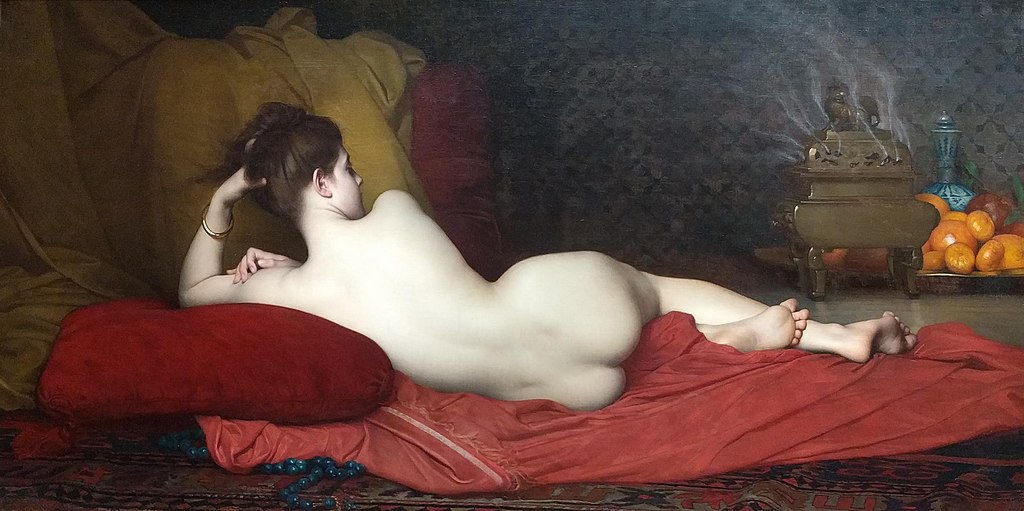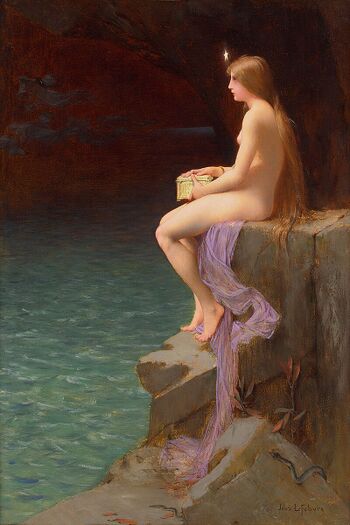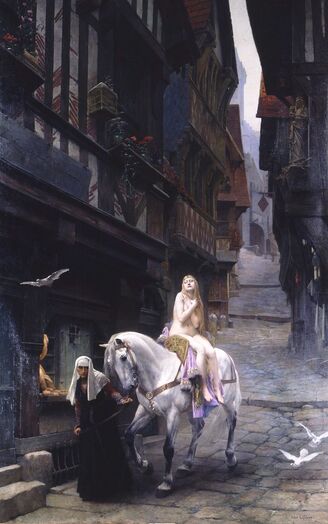Jules Joseph Lefebvre: Difference between revisions
No edit summary |
No edit summary |
||
| Line 57: | Line 57: | ||
Lefebvre passed away in Paris on February 24, 1911, and was laid to rest in Montmartre Cemetery, where his grave features a bas-relief depiction of his painting La Vérité. | Lefebvre passed away in Paris on February 24, 1911, and was laid to rest in Montmartre Cemetery, where his grave features a bas-relief depiction of his painting La Vérité. | ||
{{clear}} | |||
<gallery mode="packed" heights="350px" caption="Paintings by Jules Joseph Lefebvre"> | <gallery mode="packed" heights="350px" caption="Paintings by Jules Joseph Lefebvre"> | ||
Image:lamour_blesse.jpg|''L'amour Blesse'' (Love Hurts) | Image:lamour_blesse.jpg|''L'amour Blesse'' (Love Hurts) | ||
Revision as of 16:09, 15 April 2025
| Jules Joseph Lefebvre | |
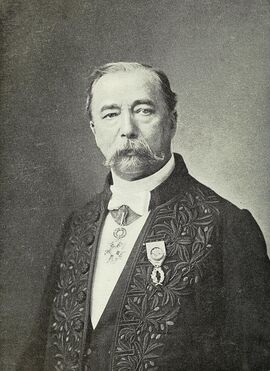 Photo of Jules Joseph Lefebvre (prior to 1903) | |
| Background information | |
| Born | Mar 14, 1836 Tournan-en-Brie, Seine-et-Marne, France |
| Died | Feb 24, 1911 - at age 75 Paris, France |
| Occupation: | Artist (Oil paintings) |
Jules Joseph Lefebvre (✦14 March 1836 – †24 February 1911) was a French painter, educator and theorist.
Early life
Lefebvre was born in Tournan-en-Brie, Seine-et-Marne, on 14 March 1836. He entered the École nationale supérieure des Beaux-Arts in 1852 and was a pupil of Léon Cogniet.
Career
He won the prestigious Prix de Rome for his painting The Death of Priam in 1861. Between 1855 and 1898, he exhibited 72 portraits at the Paris Salon. Many of his works feature single figures of beautiful women. Among the portraits he is considered best known for are those of M. L. Reynaud and the Prince Imperial (1874). In 1891, he became a member of the French Académie des Beaux-Arts.
He was a professor at the Académie Julian in Paris. Lefebvre is chiefly important as an excellent and sympathetic teacher who counted many Americans among his more than 1500 pupils. Among his famous students were Fernand Khnopff, Kenyon Cox, Félix Vallotton, Ernst Friedrich von Liphart, Georges Rochegrosse, the Scottish-born landscape painter William Hart, Walter Lofthouse Dean, and Edmund C. Tarbell, who became an American Impressionist painter. Another pupil was the miniaturist Alice Beckington, as well as Laura Leroux-Revault, the daughter of his friend Louis Hector Leroux. Jules Benoit-Lévy entered his workshop at the École nationale supérieure des Beaux-Arts.
Lefebvre passed away in Paris on February 24, 1911, and was laid to rest in Montmartre Cemetery, where his grave features a bas-relief depiction of his painting La Vérité.
- Paintings by Jules Joseph Lefebvre
Diana Surprised[Note 1]
Notes
- ↑ Diana Surprised (French: Diane surprise) is an 1879 oil painting by Jules Joseph Lefebvre.[1][2] It depicts Diana and her attendants trying to cover themselves are being surprised while bathing naked. Lefebvre didn't feel it was complete in time for the Exposition Universelle of 1878, but it was featured at the Salon of 1879 at the Louvre in Paris. Today it is in the collection of the Museo Nacional de Bellas Artes in Argentina.
External links
- More information is available at [ Wikipedia:Jules_Joseph_Lefebvre ]
- TheARTwerx – Lefebvre Gallery: Comprehensive archive of 141 images
- Jules-Joseph-Lefebvre.org: 42 images by Jules Joseph Lefebvre ( inactive as of 04/25 R/ )
- Art Renewal Centre – Lefebvre Gallery
- Jules Joseph Lefebvre, paintingiant.com ( inactive as of 04/25 R/ )
Chat rooms • What links here • Copyright info • Contact information • Category:Root
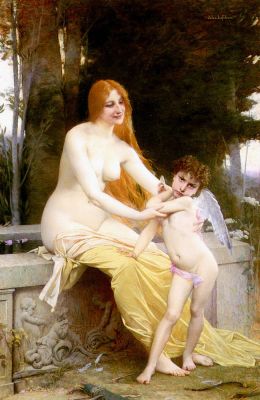
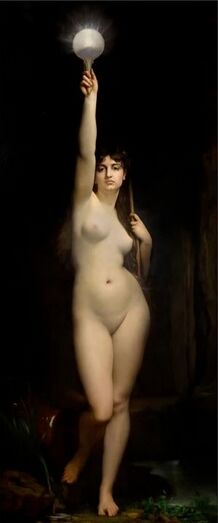
![Diana Surprised[Note 1]](/a/images/thumb/d/d5/Diane_surprise_%28Diana_sorprendida%29.jpg/707px-Diane_surprise_%28Diana_sorprendida%29.jpg)
